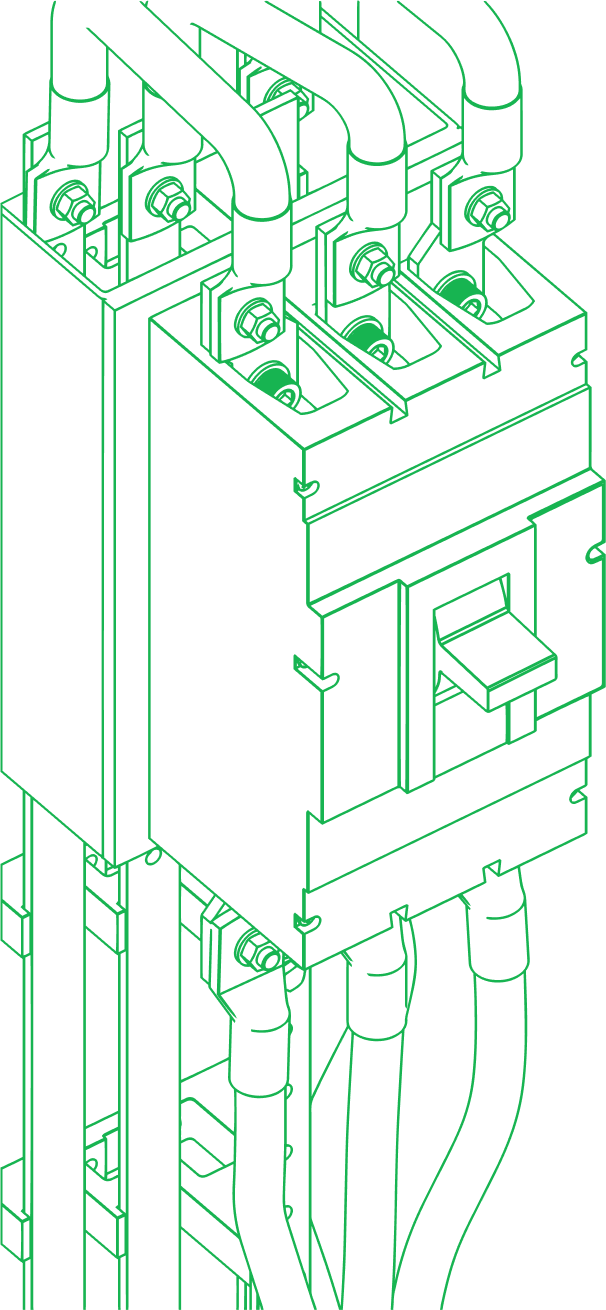Table of Contents
There’s a tool for that! (or at least that’s the promise).
Whether it’s a new CRM, a fancy analytics dashboard, or a streamlined automation platform, there’s no shortage of tools and tech promising to transform your sales funnel, target market, and customer segments.
TL;DR: Why don’t more tools automatically improve your GTM?
-
Disconnected tools don’t fix broken strategy, they magnify it.
-
Every new tool adds cost, friction, and data gaps if your systems aren’t aligned.
-
The winners aren’t adding more software. They’re building a connected GTM stack that actually talks to itself, cuts handoff friction, and ties every action back to revenue.
-
The future of GTM isn’t bloated. It’s lean, purpose-built, and connected.
But adding more tools doesn’t necessarily improve results. In fact, it often makes things worse.

Learn how and why top CROs are pivoting away from a growth-at-all-costs mindset to sustainable, repeatable strategies. Join RevPartners CEO Brendan Tolleson for a virtual fireside chat as he discusses what's needed to make the shift with Tech CXO Managing Partner Kent Elmer. 👇
How do disconnected GTM tools create operational chaos?
Adding tools to your GTM tech stack might sound like a good idea, but without a cohesive GTM strategy framework, tools quickly go from problem-solvers to problem-creators.

Disconnected Systems = Operational Chaos
No one likes dropped handoffs, missed opportunities, and frustrated teams.
But that’s what you’ll get with a tech stack that's all over the place.
Here’s why:
Sales cycles are getting longer
In B2B SaaS, the average sales cycle has jumped to 134 days, up from 107 days in 2023.
Why?
Key takeaway
Disconnected tools create extra steps, slow handoffs, and forced manual workarounds. Every extra step adds friction.
CAC payback is ballooning
It now takes 150% longer for companies to recoup the cost of acquiring new customers. Disconnected tools mean more manual tasks, endless troubleshooting, and wasted time.

Teams are working in silos
Sales doesn’t know which leads marketing has nurtured, marketing can’t see what deals sales is closing, and customer success can’t track what promises were made during onboarding.
Why is modern GTM strategy harder than ever?
There was a time when input delivered predictable output. Linear forecasting told you when to hire, who to hire, and how many leads you need to hit your goals.
But that formula no longer works. Today’s GTM landscape is defined by:
Higher Buyer Expectations
- Buyers are inundated with content and harder to engage.
- 72% of buyers prefer a sell-free, self-serve experience.
- Buyers demand seamless, B2C-style experiences even in B2B settings.
Tool Proliferation in Today’s SaaS GTM Strategy
- The average B2B company uses 23 tools in their tech stack.
- Most companies fail to integrate these tools effectively, leading to inefficiencies and lost insights.
Non-Linear Buyer Journeys
- Buyers no longer follow predictable funnels. They self-educate, engage across multiple touchpoints, and expect businesses to adapt in real time.
- An effective SaaS GTM strategy is essential for navigating these non-linear journeys.
How do fragmented tools hurt the buyer experience?

The average B2B deal involves 6.3 stakeholders—that’s a lot of people to impress.
If your systems don’t align, your customer base will feel it.
Here’s how fragmented tools damage the buyer experience:
- Mixed Messages: Each stakeholder gets a different story because your teams aren’t synced.
- Delayed Responses: Your tools aren’t integrated, so your team is slower to respond. The result is stalled deals and frustration.
- Fragmented Journeys: Buyers experience inconsistent touchpoints instead of a smooth, seamless process.
***Want more GTM tips?*** 👇
What hidden costs come with tool overload?
Every tool you add comes with hidden costs that don’t show up on the price tag.
- Wasted Time: Teams spend hours manually transferring data and fixing broken workflows instead of closing deals or improving campaigns.
- Missed Insights: Siloed systems trap data. No one has the full picture, so decisions are based on guesswork instead of facts.
- Skyrocketing Costs: CAC has increased by 180%, while the LTV/CAC ratio has dropped by 47%. This means companies are spending significantly more to acquire customers, while earning far less revenue per deal.

How can tools mask a broken GTM strategy?
It’s easy to think, “If we just had that one tool, everything would work.”
But tools are just amplifiers.
They either amplify a solid GTM strategy or they amplify the chaos of a broken one.
Tools often hide the real problem: a GTM strategy that lacks alignment, clarity, and connection.
Fixing your GTM strategy starts with pulling the right revenue levers.
Learn how to align your growth efforts and focus on what moves the needle with The BowTie Model: How & When to Pull the 4 Levers of Revenue Growth.

Instead of solving the root issues, they cover them up.
And when it comes to major revenue-driving initiatives like product launches, the cracks start to show: 79.5% of companies believe product launches significantly impact revenue, yet misalignment and disconnected systems often sabotage these efforts.
So, how do you know if your GTM strategy is held together with band-aids instead of built to scale?
How can you tell your GTM strategy is broken?
If any of these sound familiar, your GTM strategy likely has some problems:
1. Your ICP Is Fuzzy (or non-existent)
If your Ideal Customer Profile (ICP) isn’t clearly defined, your team is just guessing instead of defining clear buyer personas and pursuing qualified leads.
- What happens: Marketing generates leads that aren’t a fit, and sales wastes time chasing them.
- Why it matters: Without a solid ICP and strong product market fit, you’re burning resources on unqualified prospects while leaving high-value opportunities untapped.
2. Your Lead Handoffs Are a Mess
Marketing and sales often aren’t on the same page …or even in the same book.
- What happens: Marketing throws leads over to sales, but sales isn’t ready—or doesn’t even notice. Leads get stuck, follow-ups are delayed, and momentum dies.
- Why it matters: Every delay in the handoff process creates friction for buyers, slowing down sales cycles and lowering conversion rates.
3. Revenue Data Is Practically Invisible
If you can’t see what’s working, your decision-making is based on feelings instead of facts.
- What happens: Teams can’t identify which campaigns drive the most pipeline, where deals are stalling, or why churn is happening.

How can your GTM tech stack slow revenue growth?
For years, the default fix for GTM challenges has been: “Add another tool.”
More automation. More integrations. More dashboards.
And yet….teams are more disconnected than ever.
Add to that the fact that buyers now move faster than your systems.
- 83% of buyers research independently, and they want instant answers.
- If your tech stack is a fragmented mess, sales is out of the loop, marketing is guessing, and customer success is in the dark.
- That means slow responses, lost deals, and frustrated buyers who move on.
Key takeaway
More tools don’t mean better results. More connection does.
- Siloed systems = Missed handoffs. Untracked leads. Revenue leakage.
- Disconnected tech = Longer sales cycles. Higher CAC. Lower retention.
- A bloated stack = Wasted budget. Duplicate tools. Messy data.
The problem isn’t too many tools—it’s too many disconnected tools.
What is a connected Allbound GTM stack and why does it win?
That’s why we’re not here to tell you to cut tools—we’re here to help you connect them. Enter the Allbound GTM Stack.
A high-performance GTM stack isn’t just a bunch of software stitched together. It’s a lean, purpose-built system where every tool serves a role and every move is backed by data.
What does a fully connected GTM stack include?
A disconnected stack slows teams down. A connected one accelerates growth.
Here’s what a fully optimized GTM ecosystem looks like:
Core GTM Infrastructure 👇
Purpose |
What |
Why |
|
CRM |
|
Centralize customer data, GTM activities, and ROI into one cohesive system. |
|
Website Visitor Identification |
|
Turn hidden website traffic into actionable leads by showing who’s visiting and what they’re engaging with. |
|
Multi-Channel Outreach |
|
Scale multichannel messaging with unlimited mailboxes in a multi-channel infrastructure. |
|
Data Enrichment |
|
Aggregates data from hundreds of sources for targeted, timely, and human |
|
Content Generation |
|
Speed up content production for every stage of the buyer journey. |
|
Hyper-personalization |
|
Power multichannel marketing automation with authentic messaging and context that solves buyer painpoints. |
|
Enhanced Attribution |
|
Ensures each activity is accurately assigned to a contact record in HubSpot making it actionable and reportable. |
Sales and Revenue Execution 👇
|
Configure, Price Quote |
|
PandaDoc |
|
Commission Tracking |
|
QuotaPath |
|
Sales Enablement |
|
Supered |
|
Lead Routing |
|
Chili Piper |
|
Dialer |
|
Aircall |
|
Conversational Intelligence |
|
Avoma |
|
Field Services |
|
Zuper |
HubSpot’s Role
Speaking of connected systems….
That’s where HubSpot plays a key role. It’s not the only piece of the puzzle, but it provides the infrastructure that makes everything else work.
HubSpot provides:
- A Unified Customer View – Every touchpoint, every interaction, and every engagement in one place. Sales, marketing, and customer success aren’t operating in silos.
- Real-Time Data Syncing – Leads, deals, pipeline updates, and customer behavior sync across tools automatically. No more guessing. No more missing data.
- Seamless Integrations – HubSpot doesn’t compete with your tech stack, it unifies it. From sales automation to multi-channel outreach to customer success, HubSpot syncs every tool, every team, and every touchpoint.
- Revenue Attribution That Actually Works – Every action—ad click, email, call, or sales touch—is tied directly to pipeline and revenue. That means data-driven decisions, not assumptions.
A true GTM strategy isn’t just about acquiring customers—it’s about retaining and expanding them.
Here’s how HubSpot enables success across every stage:
Demand Generation & Lead Capture
- Integrates seamlessly with multi-channel outreach tools (e.g., Smartlead.ai, LinkedIn, OutboundSync) to ensure lead data flows into your CRM instantly.
- Tracks every visitor and interaction across marketing campaigns, turning anonymous traffic into actionable leads.
Sales Acceleration & Lead Management
- Automates lead qualification and scoring, ensuring sales focuses on high-intent buyers.
- Syncs with lead routing tools (e.g., Chili Piper) to instantly assign inbound leads to the right reps, reducing response time and increasing conversion rates.
Revenue Operations & Pipeline Management
- Centralizes all pipeline data so sales leaders get real-time forecasting without manual updates.
- Enables CPQ integrations (e.g., PandaDoc) so reps can generate, send, and close deals without leaving HubSpot.
Customer Success & Expansion
- Syncs with customer success tools (e.g., Aircall, Supered) to ensure reps know what’s been promised during the sales process.
- Enhances renewal & expansion workflows, making it easy to identify upsell and cross-sell opportunities.
Why does a fully connected stack win and what’s next for GTM?
Too many companies mistake more tools for more progress.
They end up with:
Siloed teams. Slower sales cycles. A bunch of guessing.
But the modern GTM motion is about making every tool work together.
That means:
No silos – Every system talks to the next, ensuring full visibility.
Faster revenue cycles – Leads flow seamlessly from marketing to sales to customer success.
Better attribution – Every action is tied to pipeline and revenue, so teams know what’s driving growth.
The future of GTM isn’t bloated. It’s lean, purpose-built, and fully connected.
If your tech stack feels clunky, slow, and disconnected, it’s time to rethink your approach:
Ditch the disconnected tech.
Integrate the right systems.
Turn chaos into clarity.
-1.png)









-3.png)
